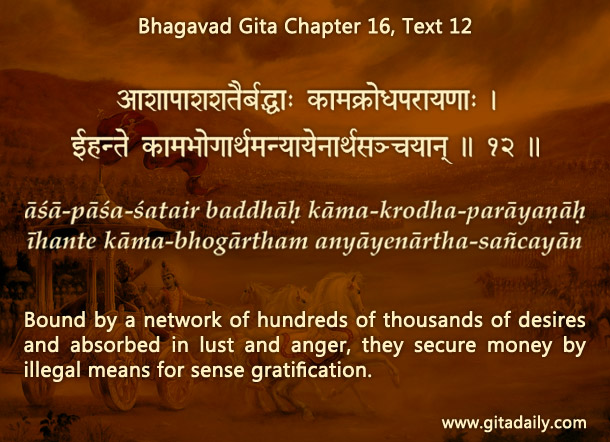When people feel that their freedom is threatened, they often protest – and protest vehemently. But if they are led to believe that they are free, then even if their freedom is taken away, they don’t oppose. The image of gullible people living unresistingly in bondage is sometimes depicted in novels, movies and conspiracy theories.
Such images underestimate the scope of unwitting bondage. The Bhagavad-gita (18.40) states that its scope is universal – everyone everywhere in the material world is subject to the bondage of the modes. While the term modes might sound unfamiliar, here it essentially refers to subtle forces that shape the interaction between consciousness and material objects.
Under the influence of the modes, we are all prone to certain desires on perceiving certain objects. We usually think of desire as something we choose, and that’s how it is initially. But the more we choose a desire and indulge in it, the more the inclination to make that choice increases. Over time, the choice becomes a conditioning, the inclination becomes a compulsion – and the desire becomes a shackle, as the Gita (16.12) indicates.
However, because this bondage is psychological, not physical, it is not easily perceivable. So, we rarely recognize the shift in our inner dynamics – we still think we are free, but we are becoming increasingly bound with each indulgence. Only when the desire-shackle makes us do something reprehensible or some consequence of an indulgence hits us hard are we jolted out of illusion and forced to acknowledge what we have become: slaves of our desires.
If we study Gita wisdom regularly, we get the eyes of knowledge to see the power of desires. And if we practice bhakti-yoga and relish higher happiness therein, we get the inner strength to reject unworthy desires and progress towards supreme spiritual freedom.
To read / hear more about this verse, please click on the above image
Explanation of article:
Podcast:


Hard Krishna CCD,
This is certainly seen everywhere at this time of year (Christmas) when our choices become less fulfilling (not more) and the freedom we perceive seems illusionary.
Jai shree Krishna